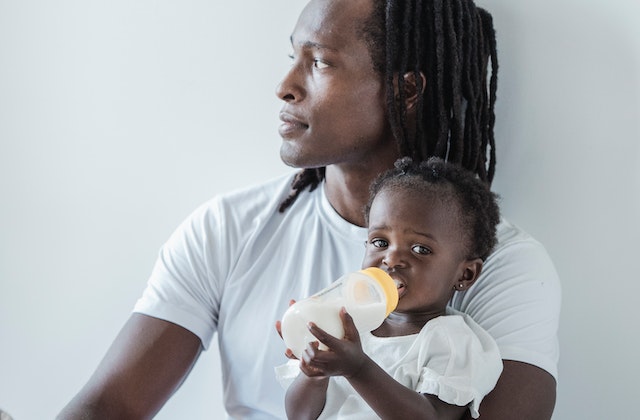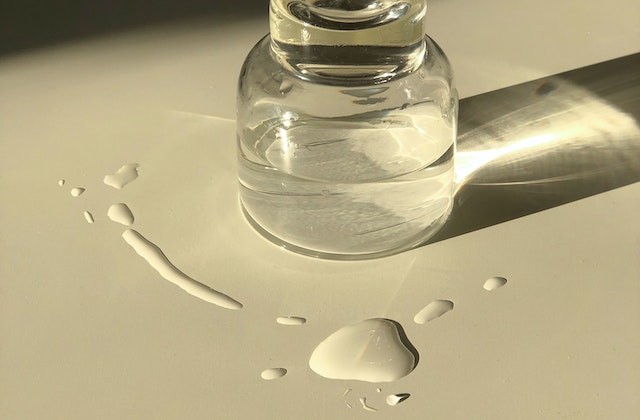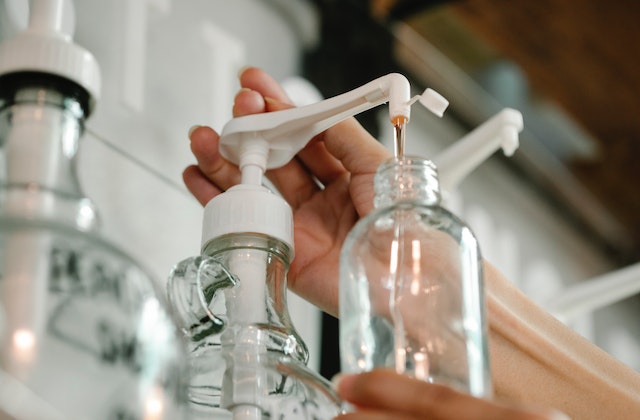
Dr. Brown’s bottles are renowned for their effectiveness in reducing gas and colic in babies. However, one common issue with these bottles is that they tend to leak, causing inconvenience and mess. Fortunately, there are ten proven ways to stop your Dr. Brown’s bottles from leaking, ensuring that your baby remains comfortable and that there are no spills or messes to clean up from your baby’s stroller, car seat, or nursery floor. Keep reading to discover these tips and tricks!
- Top 5 Reasons Your Dr. Brown's Bottle May Be Leaking
- Do Other Bottles Leak, Too?
- How Do You Stop Your Dr. Brown's Bottles From Leaking? 10 Ways To Stop Leaking
- 1. Inspect the nipple for tears
- 2. Increase The Nipple Flow Level
- 3. Examine The Ring For Damage
- 4. Review The Vent For Blockages
- 5. Clean All Parts Of The Bottle Thoroughly
- 6. Make Sure The Bottle Is Assembled Correctly
- 7. Clean The Bottle Threads
- 8. Transport The Bottles Carefully
- 9. Store The Bottles Upright
- 10. Contact Dr. Brown's Customer Service For Assistance
- How Often Should I Replace My Dr. Brown's Bottles?
- How Do Dr. Brown Bottles Special Vents Work?
- To Conclude
- FAQs
Top 5 Reasons Your Dr. Brown’s Bottle May Be Leaking

Dr. Brown’s baby bottles have been trusted by parents for years, thanks to their ability to reduce gas and colic in babies. However, some parents may experience the issue of leaking bottles when not in use, even without any accidental damage or rough handling.
While this can be an inconvenience, there are simple steps you can take to check for any defects or damage to the bottle that may cause leakage. By following these tips, you can prevent discomfort for your baby and avoid spills on surfaces such as car seats, strollers, or nursery floors. Read on to learn more!
1. Incorrect Assembly
The valve can cause leaking problems if it isn’t screwed in tight enough or not at all if your bottle is leaking from the bottom.
As you tighten the screw back into the bottle, ensure the bottom’s rubber seal is pushed down.
Also, you may have overfilled your bottle, which is why you see leaks from the neck and bottom of your bottle.
2. Not Enough Ventilation
The second most common reason Dr. Brown’s bottle might leak is that there isn’t enough ventilation.
If you see milk dripping from the top of your baby’s bottle, it may not be ventilated properly to let steam escape,
It could lead to an overflow if the bottle knocks over or shakes vigorously.
3. Use of Non-Dr. Brown’s Nipples
If your bottle is leaking, it may be due to the type of nipple you are using.
Non-Dr. Brown’s nipples can be too long for the neck of the bottle, which causes the liquid inside to leak before your baby is ready for feeding.
Try switching to Dr. Brown’s Nipple. Or, a brand of nipple designed specifically for Dr. Brown’s bottles with shorter lengths and wider diameters.
4. Old or Damaged Parts
Another common reason Dr. Brown’s bottle will leak is due to old or damaged parts.
If you are using a bottle near the end of its life, replace it with a newer model to help avoid leakage issues.
5. Incorrect Storage
The last most common reason for a leaky bottle is incorrect storage. Dr. Brown’s bottles should be stored upright and not on their side.
It can lead to the venting valve being pressed too far, causing water to leak out of the bottle while feeding your baby.
Also, ensure you don’t tilt the bottle sideways when pouring from the bottle. Always keep it straight up so the contents don’t spray onto the back of your hand.
In addition, always hold an opened Dr. Brown’s bottle with one hand at an angle pointing upwards when placing your thumb over the opening to avoid spilling any liquid inside.
Do Other Bottles Leak, Too?

Besides Dr. Brown’s bottles, other brands on the market also have a similar design, and many different leaks happen with these types of bottles.
No matter what brand you get, there will be leaking issues related to these problems:
- The flow rate of the nipples
- Ventilation system design
- Bottle lid
- Sealing of the collar
- Using a bottle that you didn’t clean properly
Consider every potential factor when diagnosing a leaking water bottle, so you don’t needlessly buy a replacement.
How Do You Stop Your Dr. Brown’s Bottles From Leaking? 10 Ways To Stop Leaking
There are a few ways to stop your bottles from leaking, but only some work 100% of the time, and some have potential drawbacks.
Here are ten ways to stop Dr. Brown’s bottles from leaking:
1. Inspect the nipple for tears
Check the nipple for tears or holes. If you find any, replace it with a new one.
Ensure you clean the nipples after each use by soaking them in warm water for five minutes and then rinsing them with cold water before using them again.
Make sure you do not over-tighten the nipple on the bottle. It will cause more leaking! Also, tighten the screw ring until there’s enough resistance to stop twisting the ring.
Remember to check your gaskets as well. They are located at the base of the bottle and may need replacement if worn out.
Replace them with these three steps:
- First, unscrew and discard the old gasket
- Clean all surfaces thoroughly, including the inside of the top collar (where threads meet)
- Finally, reattach the new gasket by pressing firmly into place.
2. Increase The Nipple Flow Level
If you are experiencing leakage with your Dr. Brown bottle, it may be due to the nipple flow level. A loose-fitting lid can allow milk to leak out of the nipple more easily.
Dr. Brown offers two nipple flow options for their bottles: slow and fast.
Fast nipples are recommended for older babies who are ready for thicker fluids or solids in their diet, while slow nipples are designed for newborns who need an easier way to eat without being overwhelmed by the pressure of the bottle.
If your baby is having trouble latching onto the bottle or seems uncomfortable while drinking from a Dr. Brown bottle, it is a good idea to experiment with both types of nipple flows to find the best fit for your baby’s needs.
3. Examine The Ring For Damage
Scan the ring for cracks or damage, especially if you use an older bottle treated poorly. It can also signify wear and tear, which means it is time for a new one.
You can maintain nipple rings by doing the following:
- Clean the nipple rings with hot soapy water.
- Rinse them well with cold water before use.
- Make sure your nipple rings fit tight. You want the nipple ring to be snug but not too tight, so putting on a new one won’t be challenging.
- Try different nipple rings: The shape of the nipples varies among infants. Some babies may need a different style than others. Your doctor will recommend which type of nipple ring works best for your baby.
4. Review The Vent For Blockages
If you find that your bottles are still leaking, take a look at the vent for blockages.
The vent is the bottle part that allows air in and out when you’re using it like a straw.
We recommend opening the vent completely by unscrewing it before washing or rinsing your bottles.
After washing and rinsing, screw the vent back on securely. Make sure there’s a good seal all around.
In addition, you can try rotating the nipple as you screw it to the neck of the bottle.
5. Clean All Parts Of The Bottle Thoroughly

To stop your Dr. Brown’s bottles from leaking, clean all parts of the bottle thoroughly.
Ensure the venting is not clogged with milk or spit-up along with the valve between the nipple and cap is clean and debris-free.
Also, ensure the breast milk isn’t leveling the top of the bottle. So it doesn’t flow over into the valve when you feed your baby.
6. Make Sure The Bottle Is Assembled Correctly
Before filling, ensure the bottle is assembled correctly by twisting the nipple on top of it and turning its base to the last level.
Be careful not to over-tighten or under-tighten.
If a leak develops during use, it may be due to too much air inside the bottle.
Try adding a few drops of water inside the neck of the bottle with a dropper before replacing the nipple.
Furthermore, use insulated containers such as baby food jars or plastic freezer bags on long trips.
Adding ice packs in the containers will preserve breastmilk or formula, so they don’t get too warm in your diaper bag.
7. Clean The Bottle Threads
The first step is to wash the bottle and remove any food particles that may be stuck in the threads.
Next, use a clean paper cloth to wipe around the neck of the bottle. Then, screw the bottom piece back on securely.
In addition, you can tighten the nipple by hand to secure it.
Once you tighten all these parts, you are ready to test if your leak has been fixed! Ensure no cracks or crevices around the nipple or inside the lid.
Fill your bottle with water and put it on its side on a level surface; if there are no leaks or drips after 30 minutes, congratulations! You’ve successfully fixed your leaking bottles!
8. Transport The Bottles Carefully
With a little care, you can avoid the problems of leaking bottles common with Dr. Brown’s products. Be sure to carefully transport your bottles in your carrying bag, car seat, or stroller.
Please, be sure not to overfill the bottle with milk before screwing on the lid.
9. Store The Bottles Upright
Dr. Brown’s bottles are notorious for leaking, but you can prevent it by storing them upright! When the bottles stand, they won’t leak, and you’ll tell if they need a new nipple.
Store the bottle on its side and put a cloth underneath to stop the liquid from pouring.
10. Contact Dr. Brown’s Customer Service For Assistance
If you are having trouble with a leaking bottle of Dr. Brown’s, and can’t resolve it with these steps, contact customer care.
Dr. Brown enjoys hearing from parents and soon-to-be parents like you. You can contact Dr. Brown by phone, email, or mail. You’ll receive a response to your query or request as soon as possible (typically in a day or two).
How Often Should I Replace My Dr. Brown’s Bottles?

Dr. Brown’s bottles will last six months before they need replacement. To find out the bottle’s age, look at the measurement markers on the side of the nipple.
If you can’t see them, it is time to replace the bottle with a new one! The measurements on the nipple change as you use the bottle.
After six months, these markings start to disappear.
In addition, older nipples may develop cracks or holes that allow formula or breastmilk to leak out when squeezed.
How Do Dr. Brown Bottles Special Vents Work?
With a unique venting system, Dr. Brown’s bottles balance the internal air pressure to ensure liquid empties from the spout gradually.
It prevents the dreaded burp sound when you’re feeding your baby and makes it easy for babies with weak sucking skills to get enough breast milk or formula without much effort.
If the vents become clogged, liquid can flow back into the tube, causing a leak around the nipple area.
The vents are for safety reasons and should be kept clean and clear of debris like cereal bits.
To unclog them, follow these steps:
- Hold the bottom of the bottle under warm water (or submerge it completely if it won’t fit in your sink).
- Gently twist and pull on the bottom nipple until you feel some suction as the air gets pulled through (you’ll know because bubbles will start appearing).
- Remove the top before giving it to the baby to ensure all residue is cleared away.
- Rinse thoroughly and dry before using again.
To Conclude
Leaking is a common problem with many bottles, including Dr. Brown’s Bottles. There are four main reasons why Dr. Brown’s bottle may leak:
- Air in the vent tube
- Too much liquid in the bottle
- Bottle tipped upside down.
- Damaged vent valve threads
However, we hope this blog post has provided helpful advice on addressing these issues!
The customer service department will help find the best solution if your bottle appears defective.
FAQs
Why Do Dr. Brown Bottles Leak At The Bottom?
The Dr. Brown bottles have a wide base to help prevent the liquid from leaking. The angled neck design makes it easier for babies to drink from and helps prevent leaking.
The most common reason for leaks is when a nipple or other object blocks the vent holes at the top of the bottle.
Do Babies Burp Less With Dr. Brown Bottles?
Dr. Brown bottles are a popular choice for parents looking to reduce burping in their infant. But do they work?
It is a question asked by many parents debating on which type of bottle to use for their baby. The answer is unclear because no scientific research can help us understand the effects of Dr. Brown’s bottles on infants.
However, some anecdotal reports and testimonials show Dr. Brown’s bottles reduce infant burping.
What Angle Do You Hold Dr. Brown Bottles?
Hold Dr. Brown’s bottles at a 45-degree angle to ensure the air bubbles can move up and out of the bottle.
The angle of these bottles is designed so that when a baby sucks on them, they can get more air. This way, they don’t have to suck as hard to drink.
Leave a Reply
You must be logged in to post a comment.